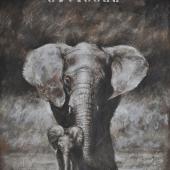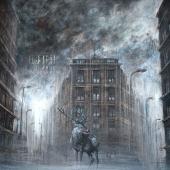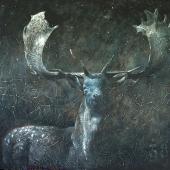Gabriele Buratti “Buga", Behind the cover ItaliaImballaggio 07-08/2024

Diritto di Balneazione
Gabriele Buratti “Buga” was born in Milan on 8 August 1964. When he was a boy, he used to watch his father and grandfather, both master jewellers in the Milan craft tradition, working material. After arts high school, he graduated at the Landscape Architecture Polytechnic. His interest in the physical, anthropic, historical and structural characteristics of the territory have profoundly influenced his painting, sculpture and photography. He knows Piero Fornasetti and has made numerous drawings for him. He also knows Remo Brindisi and has exhibited in his Museo Alternativo at Lido di Spina. He has exhibited in Europe and America and in the East.
In contrast with the past, man with his technology today dominates Nature and often disfigures it; in 2013 this led him to set up with Marco Ferra “Artists for Rhino”, in order to bring together the works of artists with an environmental theme. He currently collaborates with various Italian and foreign art galleries. In “Buga”’s painting, we can perceive a warning about the risks we are running in the face of planetary globalization, with animals becoming the paradigm of a logic that is anything but reassuring for the fate of man, today incapable of a symbiotic relationship with nature.
OVER TO THE AUTHOR
«In my work “Diritto di balneazione” (Right of Bathing), the sperm whale calmly descends into the depths of the abyss where Nature is almost uncontaminated. The silvery fish have been created with the film with which the biscuits placed on the bottom were packaged, representing man’s action on natural wealth, the source of our food».
OVER TO THE ART CRITIC
The beginning and end of civilisation.
[...] Gabriele Buratti, Italian, is the type of artist capable of infusing his works with that special aura which traditional painting in the 21st century still permits.
[...] The dark paintings are thus concentrated on the state of a civilization in which the role of human beings has become so controversial that the artist has no hesitation in making it a marginal element in the history of the world. And an atmosphere of the end of the civilised era is also transmitted by these painted scenarios, in which the civilization of the metropolises meets nature in a curious way.
[...] Human beings never appear in Buratti’s paintings, but they are nevertheless present in our perception of their absence or disappearance. They are the ones who have brough about this situation.
[...] To clarify Buratti’s pictorial themes, one could refer to the theory of nature taking its revenge, after man’s attempt to dominate it but having lost all respect for it. The artist’s paintings have brown, grey, white and black tones and are both pleasant and sad at the same time. They tell us about the tranquillity of wild animals and a new calm in the world.
[...] This is precisely what fascinates us about Buratti’s paintings. They transmit to us an image of the beginning and the end of industrial civilisation. Jürgen Kisters























